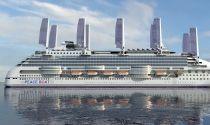Ecoship
Former name : IMAGINE
Specifications of Ecoship
| Builder | Helsinki Shipyard (Hietalahti-Helsinki, Finland) |
| Speed | 17 kn / 31 km/h / 20 mph |
| Length (LOA) | 224 m / 735 ft |
| Beam (width) | 31 m / 102 ft |
| Gross Tonnage | 55000 gt |
| Passengers | 2000 |
| Cabins | 750 |
| Former names | IMAGINE |
| Owner | Peace Boat |
| Operator | Peace Boat |
Ecoship Review
Review of Ecoship
Peace Boat's Ecoship cruise ship is an eco-friendly passenger vessel concept developed by "Peace Boat," a Japanese non-profit organization. Before the Ecoship project, Peace Boat operated themed cruises on chartered passenger ships. The new vessel was initially scheduled for delivery in June 2020 (for the Olympic Games in Tokyo), but the project was postponed due to the Coronavirus crisis.
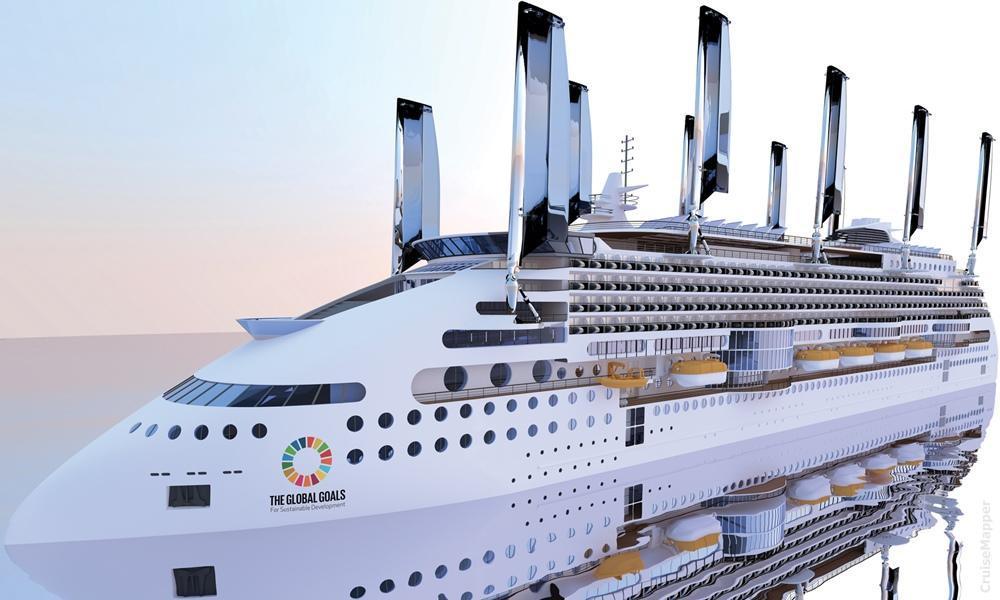
Since its establishment in 1983, the Shinjuku Tokyo-based Peace Boat organization has launched more than 90 cruises. These voyages are staffed by international volunteers who travel to regions affected by, or still experiencing, social unrest. Peace Boat cruises provide educational opportunities through onboard conferences on global issues, deliver humanitarian aid at various ports, and collaborate with local organizations.
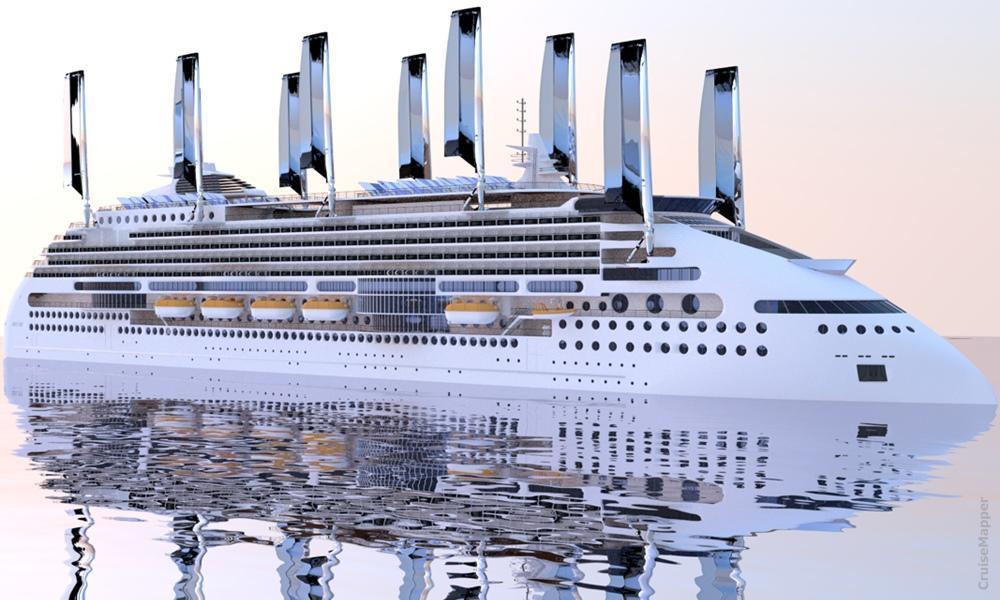
In April 2014, Peace Boat held a workshop in Germany, bringing together experts from multiple maritime industries, including vessel engineering, architecture, energy efficiency, renewable energy, and maritime law. The workshop focused on designing a new eco-friendly cruise ship. In December 2015, Peace Boat unveiled the "Ecoship" concept at the UN’s 21st Climate Change Conference in Paris, France.
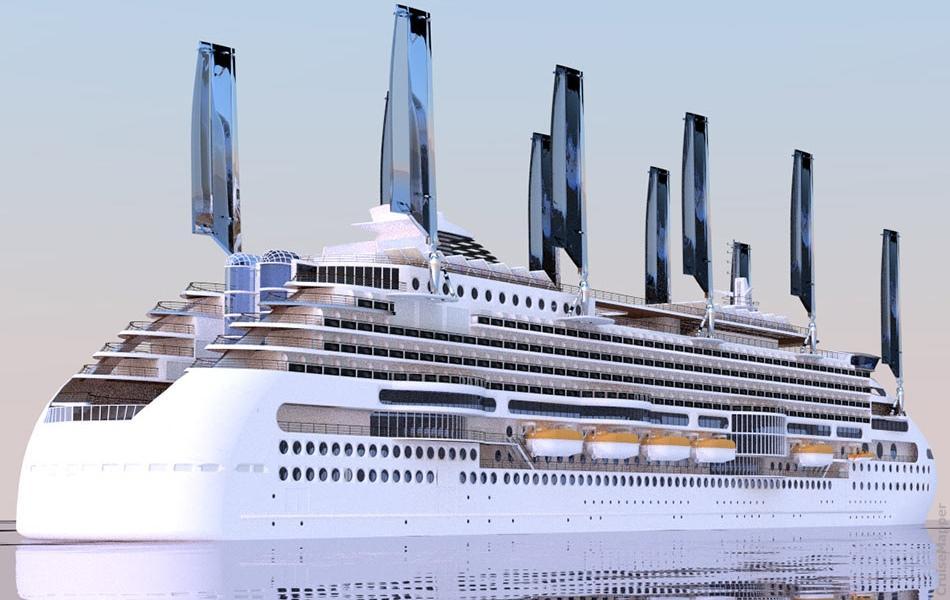
In June 2017, Peace Boat signed a letter of intent with Finnish shipbuilder Arctech Helsinki Shipyard to construct the Ecoship. The 750-cabin, 2000-passenger vessel was originally scheduled for delivery in Q2 2020.
Ecoship features a nature-inspired architectural design developed by Oliver Design (Spain). The ship also houses a laboratory and observatory dedicated to climate change and marine research.
The 55,000 GT Ecoship uses hybrid propulsion (diesel-electric with Azipod units) to reduce CO2 emissions by 40%. She also features an aerodynamic, whale-inspired hull above the waterline and a non-toxic coating that mimics fish skin.
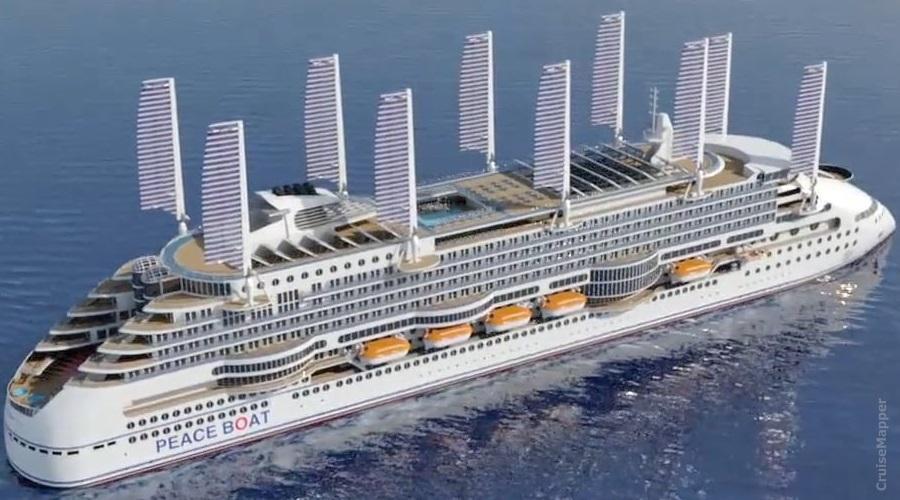
Public spaces and cabins are designed to be comfortable, spacious, and closely connected with nature, following biophilic principles. Amenities include an outdoor garden, an aft open-air show lounge (amphitheater with tiered seating), a pool deck with three jacuzzis, a midship pool deck with a rectangular swimming pool and large jacuzzi, a top-deck Sun Deck integrated with solar panels, a forward open-air panoramic lounge (amphitheater with tiered seating), glass-walled panoramic elevators, energy recycling, a closed-loop water system, zero water discharge, and significantly reduced greenhouse gas emissions.
The vessel is equipped with kinetic floors, 10 retractable wind generators, 10 retractable photovoltaic sails, and a top-deck solar farm (6000 m² / 64,580 ft²). The self-sustained garden uses recycled organic waste, treated wastewater, and rainwater.
The Ecoship is powered by dual-fuel engines running on LNG (liquefied natural gas) and MDO (marine diesel oil), and is future-ready to operate with biofuels. LNG is the primary fuel. Photovoltaic sails (with integrated solar panels) and retractable wind generators (on 10 masts) reduce fuel consumption by about 20% by lowering propulsion energy needs during low wind conditions. Additional alternative fuel is generated from galley and kitchen waste.
The ship’s air-conditioning and heating systems are powered by recycled waste energy from the main engines, cutting onboard electricity demand by about 50%. The aerodynamic upper hull design further improves fuel efficiency, while the air bubble lubrication system reduces hull-water resistance.
The waste-energy recovery system reuses up to 80% of energy that would normally be lost to water and air. Energy storage is supported by hot and ice storage tanks combined with advanced battery technologies.
The vessel is classified as "Type C" and "PC7" (Polar Class 7 / ice class). She is also the world’s first cruise liner designed to harness wind energy.
Ecoship ship related cruise news
- Cruise Industry
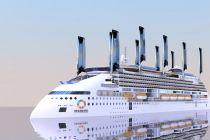
Peace Boat Signs for the Ecoship
Peace Boat soon signed a letter of intent with the Finnish shipbuilding company Arctech Helsinki Shipyard Inc., to build the Ecoship, the greenest...
June 6, 2017 - show more news
Ecoship Wiki
The Ecoship project, aimed at designing and building an eco-friendly cruise vessel, combines traditional materials with the latest renewable energy technologies. In 2016, 220 cruise ships carried 24 million passengers. While cruising continues to grow in popularity, it has a significant environmental impact. On average, a typical cruise liner consumes 225 tons of marine fuel/heavy oil per day. A large passenger ship generates CO2 emissions equal to about 83,700 cars and SO2 emissions comparable to those of roughly 376 million cars.
Peace Boat is a Japan-based non-profit organization that promotes sustainable development and operates educational cruises lasting 80 to 100 days. Its "Ecoship" project was finalized in 2018 after three years of research and development by an international team of engineers and designers. The vessel’s hull, inspired by whales, features a hydrodynamic shape combined with 10 retractable sails, 10 wind turbines, and 12,000 m² (129,200 ft²) of solar panels, all of which significantly reduce fuel consumption. About 95% of the ship’s structure is made of steel.
One of the project partners is the "World Steel Association," a non-profit organization headquartered in Brussels, Belgium. It represents more than 160 global steel producers (including 9 of the world’s 10 largest), along with numerous steel industry associations and research institutes. Its members account for about 85% of global steel production.
As of 2018, Peace Boat had one Ecoship under construction, scheduled for launch in 2020. If the concept proves successful, Peace Boat plans to order up to four additional vessels to be launched by 2030.



